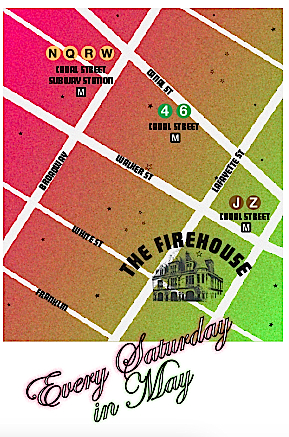Q: Why is the opportunity provided by this bursary crucial to your artistic and professional development?
A: It will place within a research-lead, conference-based, international environment the central tenets of my practice over the last 20 years. Namely an exploration into the politics of material values within socio-economic frameworks.
Set against these frameworks Open Engagement 2018 takes SUSTAINABILITY as its core theme; ranging from artists livelihoods and socio-economic paradigms to political, institutional and environmental urgencies. Attending the conference will offer an unprecedented access to global and local thinkers, to change-agents and artist-lead initiatives and to key-note presentations from Lucy Lippard (Feminism, dematerialization, ‘cultural amnesia as political strategy’) and Mel Chin (cross-cultural aesthetics, complexity, multi- disciplinarity).
It will allow me to question how arts practice can encourage communities, as well as individuals, to critically review their existing ‘visual cognitive strategies’ whilst developing new methodological approaches ‘that dislodge discipline boundaries, override media conventions, and disrupt political interests’ (Sullivan, 2012), whilst also exploring work that shifts the focus from objects to relationships (Capra, 1996, p28). The conference will prompt me to not only question my own personal sustainability but my global framework of activity as a practitioner. It will provide a location to consider systems thinking, ecological perturbation and the disjuncture inherent between profit & value in potentially resource scarce environments. As I work across a wide framework that engages with multiple project partners from national charities to broadcast channels and from primary school children to vulnerable and hard-to-reach adults, attendance at the conference could benefit not only my aforementioned collaborators but also all of the intrinsically-related stakeholders/commissioners in equal measure.
////////////////////////////////////////////////////////////
OPEN ENGAGEMENT 2018 – Curatorial Statement
Written by Crystal Baxley, Jen Delos Reyes, and Latham Zearfoss
Edited by Jade Thacker
‘It is not coincidental that as Open Engagement nears its ten year anniversary we choose to examine the theme of sustainability. While we are thinking broadly about the urgent complexities of sustainability ranging from social, economic, cultural, environmental, educational, and institutional, we are also faced with the issue of our own sustainability as an artist-led project, and in turn, what that means for all of us committed to socially engaged art and social justice practices. What happens to our labors of love when love is no longer enough? As a team of five un/derpaid employees, we have worked to create spaces that are fluid, feminist, queer, accessible, restorative, and anti-racist—spaces that are accountable for their aims while also championing radical, visionary, difficult, revolutionary, necessary work.
How are we as artists, activists, students, educators, administrators, and organizers working towards meaningful and sustainable change? How can we ensure that an ethos of environmental symbiosis and equality amongst all peoples is not only sustained, but updated and informed by future generations? As the world continues to, exhaustingly, (re-)invest in paradigms and institutions that are failing, how are we pushing back against an ethos that prioritizes self-survival over collective nourishment? How do we imbue our actions with foresight, so that we model holistic methodologies of care and restoration on an institutional, perhaps even global, scale? These are questions we are demanding of ourselves, and of you.
Open Engagement 2018 seeks to explore and honor the ways that systems and actions are connected; how they fail and how they thrive. How do artists support themselves and their communities? How do we do so in impactful ways that foster new paradigms of inclusion, nuance, safety, criticality, health, agency, justice, and purpose for all? How are artists and their institutions impacting the environment, culture, economics, technology, politics, social dynamics, and national and international law?
We welcome programming that reflects upon universal sustainability, the sustainability of our field, and the sustainability of Open Engagement as both a site and a form. We are looking for practical tactics and methodologies for sustainable practices, as well as expansive, theoretical propositions for maintaining radical departures from the status quo.
Let us think through the sustainability of these practices together to find ways to better nurture our field’s needs, and ensure that those engaged in this work can continue to mobilize towards a more just and liberated future.’












